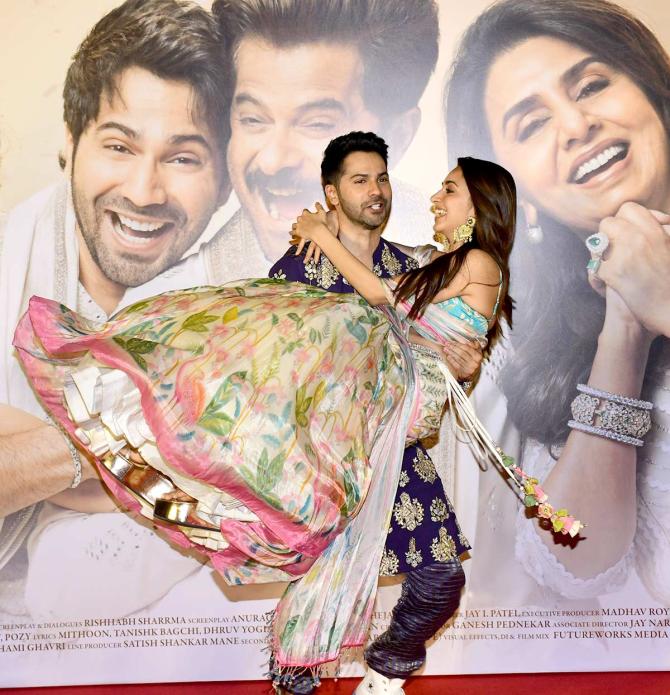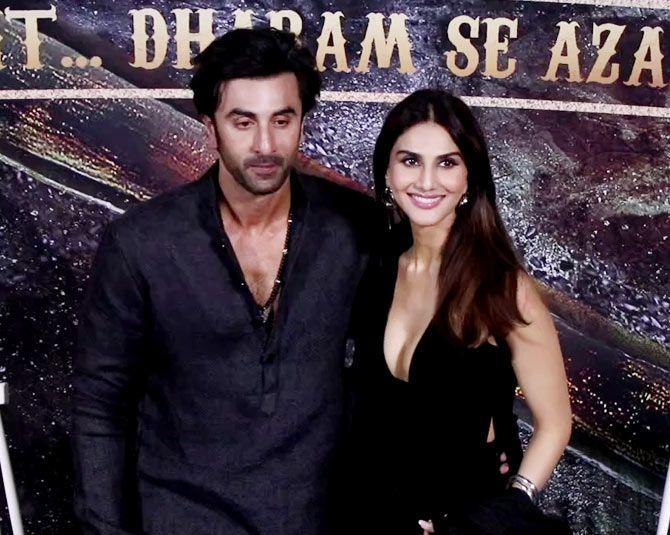Seven of Bollywood’s big stars (Akshay Kumar, Ranveer Singh, Ajay Devgn, Varun Dhawan, Saif Ali Khan, John Abraham and Shahid Kapoor), who had 10 movies released with a collective budget of Rs 1,100 crore since December, could rustle up only around a third of that money at the box office.
Bollywood’s fickle box office aims to become king again after losing its prominence during the pandemic to over-the-top (OTT) platforms as a key revenue contributor for a movie.
The platforms splurged big bucks as exhibitors were forced to close screens or function only on mandated lower capacities.
As a result, digital rights accounted for 50-60 per cent of a movie’s revenue compared to 30-40 per cent when the going was normal.
But things are changing. OTT players extracted an attractive deal with production companies and exhibitors by slashing the gap between a theatre release and that on OTT platform from eight weeks to four.
But come August 1, producers are returning to the old rules of the game as cinemas are all open without capacity constraints and audiences are flocking in.
The decision is significant. Multiplex owners believe it will help increase theatre occupancy so overall revenues will rise steadily as more and more people come to watch movies on the big screen.
For production houses, the cushion of pre-selling their movies at a huge premium to OTTs could get more challenging.
But for Bollywood’s A-listers, it is a wake-up call since their recent films have collapsed in the box office like ninepins since the doors of the theatres opened across the country.
Seven of Bollywood’s big stars (Akshay Kumar, Ranveer Singh, Ajay Devgn, Varun Dhawan, Saif Ali Khan, John Abraham and Shahid Kapoor), who had 10 movies released during this period with a collective budget of Rs 1,100 crore since December last, could rustle up only around a third of that money at the box office.
Even the most dependable of them all, Akshay Kumar, has had two back-to-back flops.
Samrat Prithviraj from the Yash Raj stable cost Rs 200 crore (Rs 2 billion) to make and earned just Rs 80 crore (Rs 800 million) at the box office.
A few months earlier, his other big release, Bachchhan Paandey ended with collections of a mere Rs 50 crore (Rs 500 million), a third of the budget it took to make the film.
Worse, marquee production houses are also facing rejection. For instance, Yash Raj Films (YRF) faced three duds.
Based on estimates by trade analysts, since December Samrat Prithviraj, Jayeshbhai Jordaar and Bunty aur Babli 2 collectively made over Rs 100 crore (Rs 1 billion) in the box office, which is not even a third of what they spent on them.
Adding to the challenges is that movies by Bollywood’s top stars and production houses are being replaced by dubbed south Indian blockbusters.
According to Koimoi data of the top 10 movies based on box-office collections in 2022, half the money were generated by three dubbed south Indian movies — RRR, KGF2 and Pushpa (over Rs 800 crore/Rs 8 billion) — clearly showing a discernible change in audience preferences.
“Clearly, audiences want to see larger-than-life movies like KGF2 or RRR on the big screen and the other social and romantic dramas on the OTT. There is also a clutter of movies getting released every week so audiences will have to choose,” said Shibasish Sarkar, former CEO of Reliance Entertainment and producer of many blockbusters.
Sarkar has also floated a special purpose acquisition company or SPAC to raise funds for buying into entertainment companies in the US.
Sarkar pointed out that this is a global trend even preceding the pandemic, where franchises such as Marvel have broken all records on the box office globally but Oscar-winning movies only attracted niche audiences.
Now, the longer gap for a movie to hit OTT platforms could help exhibitors, who after a hiatus of two years have been able to reach pre-COVID-19 levels (Rs 1,500 crore/Rs 15 billion a month), helped by a 15-20 per cent rise in ticket prices.
“Our average occupancy in PVR is at 36-37 per cent. We hope that the eight-week window will lead to a 2-3 per cent increase in occupancy and, therefore, more revenues. The industry average occupancy is at 26-27 per cent,” said Kamal Gianchandani, CEO of business planning and strategy at PVR Ltd and president of Multiplex Association of India.
Trade analyst Komal Nahta added that fence sitters, who could not decide whether to see a movie on screen or OTT, will now perhaps opt for the big screen experience in larger numbers.
“This will give a big push to the first weekend numbers of the movie, which have fallen dramatically. And remember, they set the mood for the next few weeks. In many cases occupancies are as low as 15-20 per cent, especially in the afternoon shows,” he said.
As an example, he points to Dharma Production’s Jugjugg Jeeyo, with a star cast of Varun Dhawan, Anil Kapoor and Kiara Advani, could not even hit Rs 10 crore (Rs 100 million) on the first day when it should have garnered at least Rs 15 crore-Rs 16 crore (Rs 150 million to Rs 160 million).
It is nowhere near recovering its budget of Rs 105 crore (Rs 1.05 billion) from the box office (it has accumulated around Rs 79 crore/Rs 790 million to date).
Yet most of these movies did not lose money for the producers because OTTs paid big bucks to get them on their platforms.
Though OTT players do not divulge how much they paid (they have multi-movie deals with some of the larger production houses), Nahta said they typically pay Rs 80 crore-Rs 90 crore crore (Rs 800 million to Rs 900 million) for movies with A-listers, and even higher when the superstars are involved.
Now that OTT premium will fall between 10 and 20 per cent, given that they have to wait for eight weeks to launch on their platforms.
Sarkar predicted that going forward only the top 10-30 movies will be presold (15 per cent of all Bollywood movies); the rest will see the pricing determined on their box-office performance.
During the pandemic, 80-90 per cent of the films were pre-sold. The challenges will arise sometime next January after the stock of pre-sold movies runs out.
Feature Presentation: Ashish Narsale/Rediff.com
Source: Read Full Article




